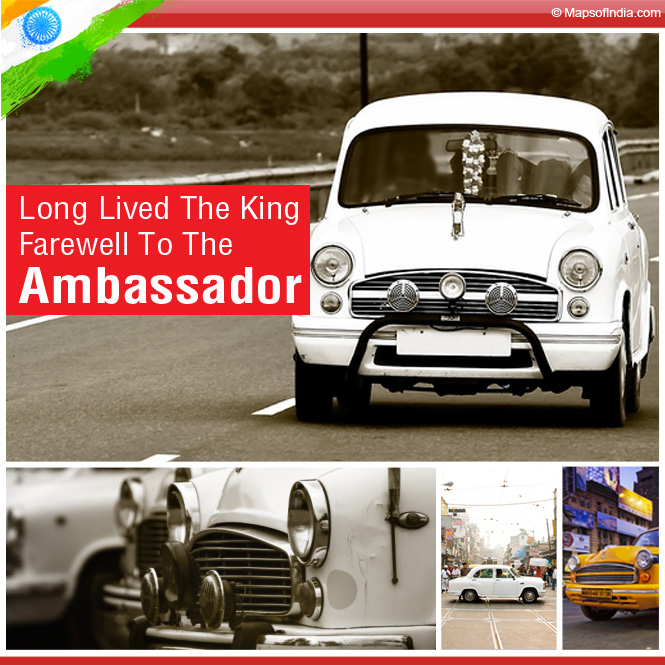Barely four feet tall, bubbling with enthusiasm, my feet hanging off the driver’s seat struggling to reach the pedals, and I wanted to learn how to drive. I’ve had a craze for cars for as far into my childhood as I can remember and nothing enticed me in those days like my father’s “office” car as I was fond of calling it.
One could be a government employee of significant influence, or a successful professional looking to make a statement, but if you wanted a dominating road presence and the satisfaction of turning heads, along with the sturdiness of a tank, and all this at a price of a humble hatch, the Hindustan Motors Ambassador would have been your numero uno preference.
Based on the Morris Oxford III, the Ambassador fondly called “Amby” or “King of the road”, has been in production since 1958. The original car, Morris Oxford II was rebadged the “Landmaster” and it came with a side-valve engine which was later improved to an overhead-valve engine. A fully enclosed monocoque (mono meaning single and coque meaning shell) chassis, blessed the car with its bountiful space adding to the comfort and luxury factors and was quite an innovation in that period of time. Having borrowed its 1.48-litre heart from the BMW – B series, the Amby became India’s first diesel powered car. With a long list of models and very minor cosmetic changes done to its front and rear ends, it is one of the very few cars that have seen an exceptionally long and successful term of production.
With its stance, space, comfort and visual presence the Ambassador was a favourite amongst almost all the politicians and bureaucrats and that, was how 16% of its total sales came from the Government of India. From a massive production figure of 1 lakh units a year in 1984, the company set a new record when it touched 9 lakh units in 2004.
In 1992, a 75 bhp Ambassador with more power, propelled by an 1800 cc Isuzu inline four cylinder engine coupled with a five-speed manual gearbox was released. Featuring the option of bucket seats, as opposed to the earlier bench seats, and with the entire dashboard completely redesigned, the new model complete with new trims and seatbelts was called, the Ambassador 1800 ISZ. A number of models followed in the decade to come but the big step up came with the Ambassador Avigo in 2004. With a revised marketing strategy and design inspiration from the Mini and the Porsche 356, the Avigo came with a face-lifted front, wood grain panels and beige interiors to significantly add to the luxury factor which was by that time considered almost negligible had it not been for the space.
In 2008, Indian Designer and Customization guru Dilip Chhabria showcased a custom car based on the Ambassador. The concept featured key design elements from the iconic Ambassador classic and represented what one might call the Amby of the future, and was named DC Ambierod. What might give a lot of us quite some pleasure and satisfaction, is the fact that the Ambassador, because of its popularity and reputation, was the inspiration of this build.
On the 30th of June 2013, British motoring programme Top Gear featured a special challenge in their episode where the anchors of the show put together several iconic cars being used as taxis from around the world at the Lydden Hill Race Circuit. The British taxi, represented by the Hackney carriage, a Volkswagen Beetle representing the Mexican counterpart, a Ford Crown Victoria representing the American yellow cab, a Mercedes-Benz E-Class from Germany, a South African Toyota Hiace, a stretch limousine Lincoln Town Car from Russia and last but not the least, our very own Hindustan Ambassador representing the Indian Taxi completed the round-up. Like most of their challenges, a group of motorsport professionals along with one of the anchors – Hammond himself were employed to race the vehicles.
The limo spun out and the Ford went headlong into its side, destroying both cars in the process. The Mercedes crashed into a tyre barrier and flipped finally leaving only the Ambassador, Beetle, Hiace and Hackney carriage to cross the finish line. The Ambassador managing to finish first, was declared “The best taxi in the world”.
Since its inception in 1958, the Ambassador has been in production for more than half a century. It has featured in countless films, been tossed and pitched in rallies and has lived on longer than several cars put together. From a meagre price tag of Rs 12,000, the Ambassador’s price tag reached nearly Rs 7 lakh.
On May 25th 2014, Hindustan Motors pulled the plug on the production line of its last factory in West Bengal, bringing to an end an era of one of the most iconic and robust cars, that the world has seen. Having said that, our beloved Amby is soon to join the class of the most popular vintage cars in the world.





